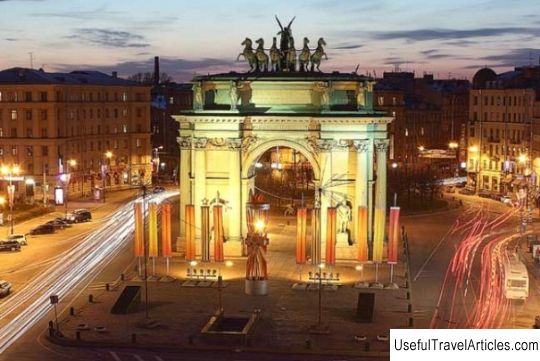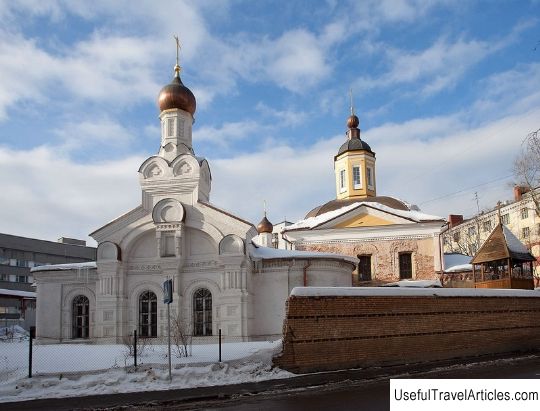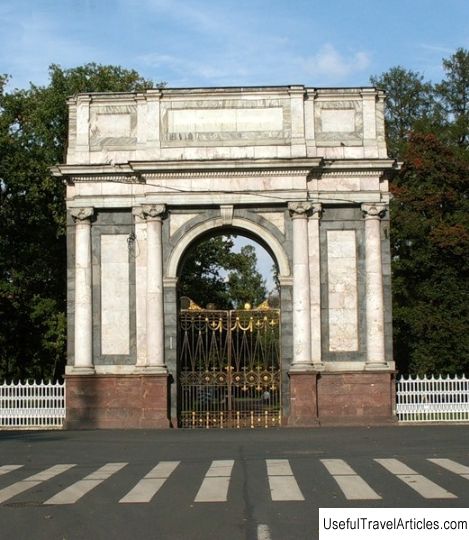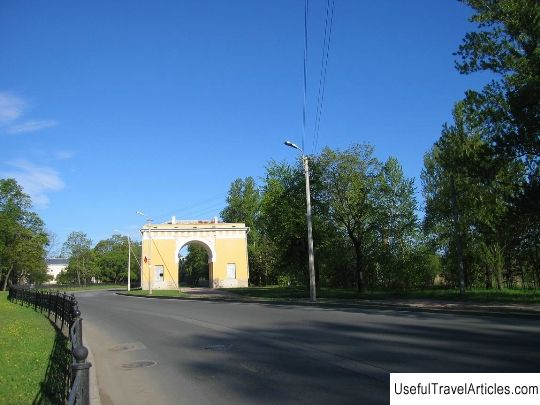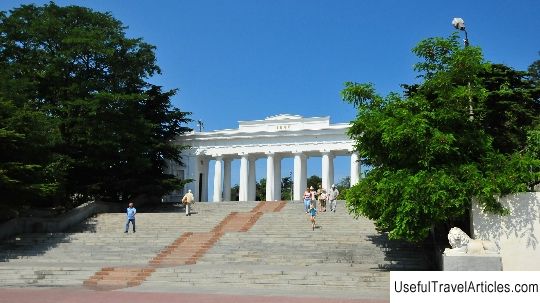Moscow Triumphal Gates description and photos - Russia - St. Petersburg: St. Petersburg
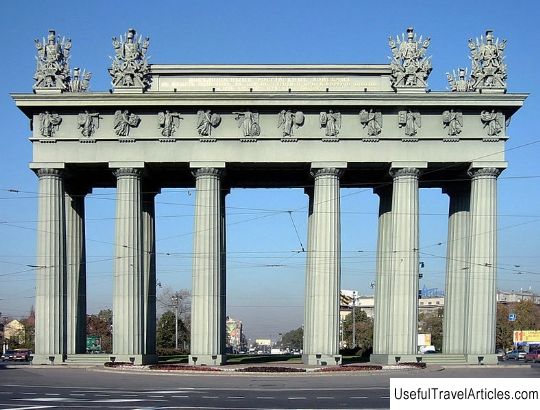
Moscow Triumphal Gates description and photos - Russia - Saint Petersburg: Saint Petersburg. Detailed information about the attraction. Description, photos and a map showing the nearest significant objects. Photo and descriptionIn honor of the victory in the Russian-Turkish war in St. Petersburg in 1834-38. the Moscow Triumphal Gates were erected. This architectural monument is located at the crossroads of two avenues: Ligovsky and Moskovsky. The authorship of the project belongs to V.P. Stasov. At the beginning of the 18th century, the road to Moscow began from here and the city outpost was located. In 1773, the idea to install a stone gate here appeared, the project of which was presented by the architects E. Falcone and C. Clerisso. However, work did not begin. And only almost 40 years later, after the victorious actions of the Russian army in the wars with Persia and Turkey, Emperor Nicholas I ordered the erection of the Triumphal Gate in St. Petersburg. In 1831, the building committee developed and approved a project for a new square. The first of the projects of the Triumphal Gate was the work of A.K. Kavos. According to his plan, the gates were supposed to enter a large architectural ensemble of 2 pyramids and a three-span colonnade. The cost of this project was fantastic. Then the famous architect Vasily Petrovich Stasov was asked to create a more economical option. By 1832 he had developed two versions, and in 1833 - sketches of the facade. It was decided to cast the Moscow Gate from cast iron. In 1834, they finally decided on the place of their installation and at the proposed place they erected a full-size model. As the direct executors of the project, the foremen of the contractor Grigoriev's artel were selected, who in 20 days was able to make a shield with a gate view. He was presented to Emperor Nicholas I, who, having familiarized himself in detail, made some of his own adjustments. Besides, at the Foundry, another model was made - one of the columns in full size. In April 1834, Stasov presented the final draft of the Triumphal Gate and guardhouse. In August, laying of the foundation of 569 blocks began, which were laid in two rows. Then a 4-meter layer of Tosno slabs was laid. The groundbreaking ceremony took place on September 14 of the same year. Slabs with the names and initials of the architect Stasov, the dignitaries present, gold, silver and platinum coins were laid under the future Triumphal Gates. The work on the construction site was directed by the architect E.I. Dimmert. The total weight of cast iron products - columns and capitals of the Moscow Gate - was more than 51,000 poods, copper - 1,000, iron - 5,000. In 1836, the Triumphal Gates began to be put together. The work was supervised by master Zaburdin. The sculptures of the Moscow Triumphal Gates were created by B.I. Orlovsky. Emperor Nicholas I personally made a commemorative inscription on the triumphal gates: `` To the victorious Russian troops in memory of the exploits in Persia, Turkey and during the pacification of Poland in 1826, 1827, 1828, 1829, 1830, 1831 ''. The Moscow Triumphal Gate in St. Petersburg is the largest architectural structure in the world, assembled from cast iron elements. Their height is 24 m, length - 36 m. The cost of their construction was about 1 million 180 thousand rubles. The opening of the Triumphal Gate took place on October 16, 1838. In 1936, due to the rebuilding of Moskovsky Prospect, the Triumphal Gates were dismantled. They were planned to be transferred to Victory Park. These plans were not destined to come true. With the beginning of the Great Patriotic War, the cast-iron details of the gates were transferred to a special warehouse, the decor elements were transferred to the city's museums. Details of the Moscow Gate were used in anti-tank obstacles. After the end of the war, it was decided to restore the gate. In the Lenproyekt workshop under the direction of I.G. Kaptsyuga and E.N. Petrova created a project to restore them in their original form. By that time, of the 108 original parts of the columns, only 65 survived. Of the sculptures, 13 could be restored, while the rest had to be reproduced. In 1961, the Moscow Triumphal Gates were completely restored. In 1965, the square at the Moscow Gate was renamed into Moscow. In October 1968, the historical name was returned, and the square was renamed again, as before - "Moscow Gate". The same name was given to the metro station located on the square. At the beginning of the 21st century, the Moscow Triumphal Gates were restored.        We also recommend reading Church of Santa Maria della Croce, description and photos - Italy: Cremona Topic: Moscow Triumphal Gates description and photos - Russia - St. Petersburg: St. Petersburg. |
